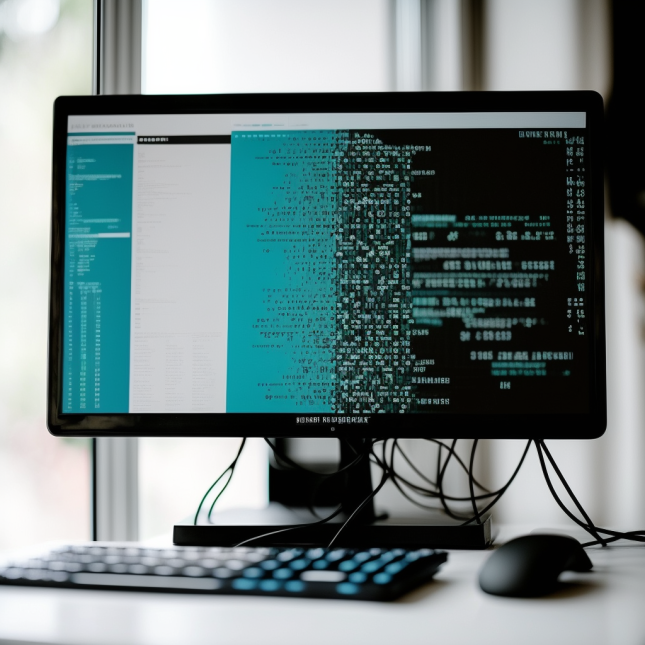AI and Cybersecurity: Protecting Our Digital World
In today's world, where technology is integrated into almost every aspect of our lives, cybersecurity has become increasingly important. With more data being created and transmitted through digital means, the risks associated with cyber attacks have also increased. As a result, businesses and governments around the world are investing in cybersecurity solutions to protect themselves and their users from potential attacks. One technology that is gaining traction in the field of cybersecurity is artificial intelligence (AI). AI has the potential to revolutionize the way we detect, prevent, and respond to cyber threats. In this blog post, we will explore the ways in which AI is being used in cybersecurity, as well as its potential benefits and challenges.
Detect and Respond: How AI is Revolutionizing Threat Detection and Prevention
One of the primary ways in which AI is being used in cybersecurity is through threat detection and prevention. AI can quickly and accurately identify potential threats, analyze them, and respond in real-time. According to a report by MarketsandMarkets, the global market for AI in cybersecurity is expected to grow from $8.8 billion in 2020 to $38.2 billion by 2026, representing a compound annual growth rate (CAGR) of 26.3%. This growth is being driven by the increasing number of cyber attacks and the need for more efficient and effective threat detection solutions. An example of a company using AI for threat detection and prevention is Darktrace. Darktrace's AI-powered system uses machine learning algorithms to detect and respond to threats in real-time, without human intervention.
Secure Access: The Role of AI in Identity and Access Management
Another way in which AI is being used in cybersecurity is through identity and access management. AI can help ensure secure access to sensitive information by identifying and verifying users, as well as detecting and responding to potential security breaches. According to a report by ResearchAndMarkets, the global market for AI in identity and access management is expected to grow from $5.8 billion in 2020 to $24.8 billion by 2027, representing a CAGR of 23.7%. An example of a company using AI for identity and access management is IBM. IBM's AI-powered Identity and Access Management (IAM) solution uses machine learning algorithms to detect and respond to potential security threats, while also providing secure access to sensitive information for authorized users.
Spotting the Unusual: AI-Powered Anomaly Detection in Cybersecurity
AI can also be used for anomaly detection, which involves identifying unusual activity that may indicate a potential cyber attack. AI can quickly analyze vast amounts of data to identify patterns and anomalies, allowing for early detection and response to potential threats. According to a report by Allied Market Research, the global market for AI in anomaly detection is expected to grow from $2.1 billion in 2019 to $5.2 billion by 2026, representing a CAGR of 12.7%. An example of a company using AI for anomaly detection is Splunk. Splunk's AI-powered system uses machine learning algorithms to detect and respond to potential security threats by analyzing vast amounts of data in real-time.
The Limits of AI: Addressing Bias and Ensuring Human Oversight in Cybersecurity
While AI has the potential to revolutionize the field of cybersecurity, it also presents a number of challenges and limitations. One of the primary challenges is the potential for AI biases, which can lead to inaccurate or incomplete threat detection. Additionally, AI algorithms are only as good as the data they are trained on, which means that if the data is incomplete or biased, the results may be inaccurate. An example of this was seen in the case of Microsoft's AI-powered chatbot, Tay, which was quickly shut down after it began spouting offensive and inflammatory messages due to the biased data it was trained on. This highlights the need for human oversight in the development and deployment of AI solutions in cybersecurity.
The Future of Cybersecurity: Advancements in AI and the Role They Will Play
The future of AI in cybersecurity is promising, but there are still challenges to overcome. According to a report by MarketsandMarkets, the global market for AI in cybersecurity is expected to reach $38.2 billion by 2026, growing at a CAGR of 23.3% from 2021 to 2026. One example of the future of AI in cybersecurity is the use of machine learning to detect and respond to advanced threats in real-time. By analyzing large amounts of data and identifying patterns, machine learning algorithms can quickly detect anomalies and respond to them before they cause significant damage. However, there are still challenges to overcome, such as the need for more data and the potential for AI systems to be vulnerable to attacks themselves.
AI and Cybersecurity: Embracing the Potential and Addressing the Challenges
As our world becomes increasingly digital, the need for cybersecurity has never been more important. AI is at the forefront of the fight against digital threats, and its potential in this field is vast. From threat detection and prevention to identity and access management, AI is already revolutionizing the way we approach cybersecurity. However, as with any new technology, there are also challenges and limitations to be aware of. By understanding the potential and limitations of AI in cybersecurity, we can better prepare ourselves for the digital challenges of the future.
References









